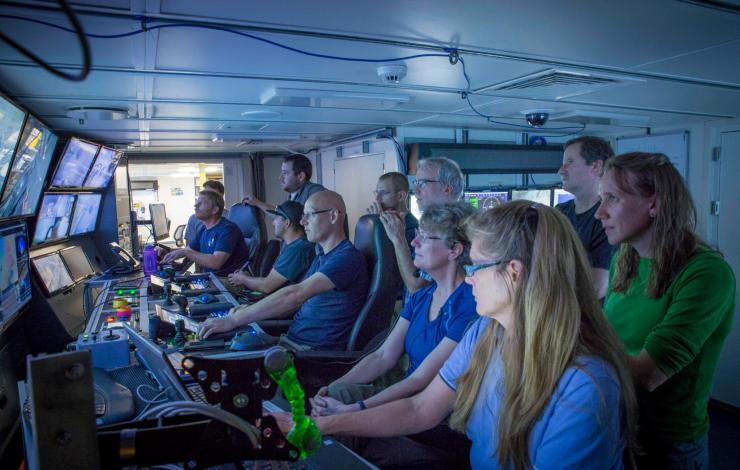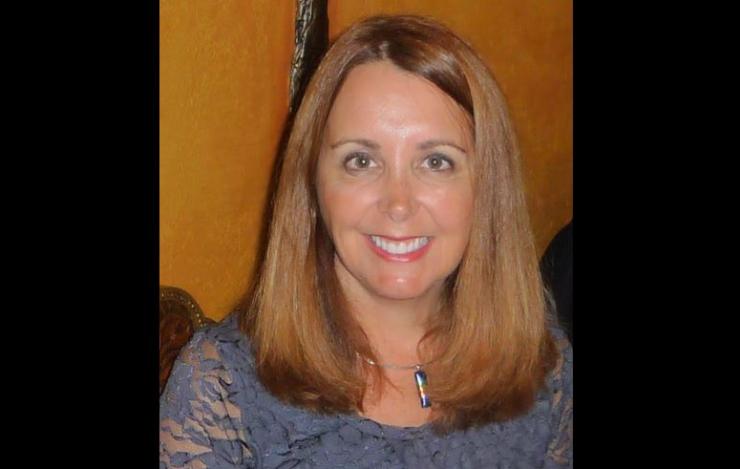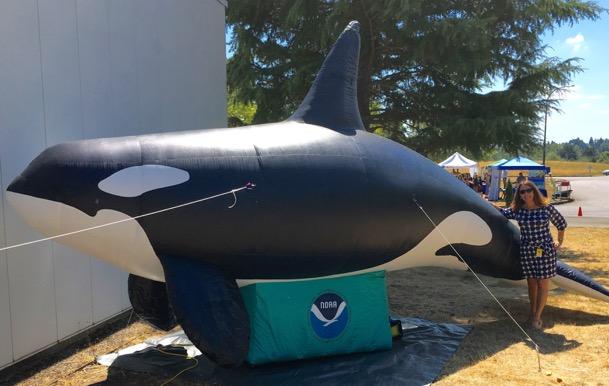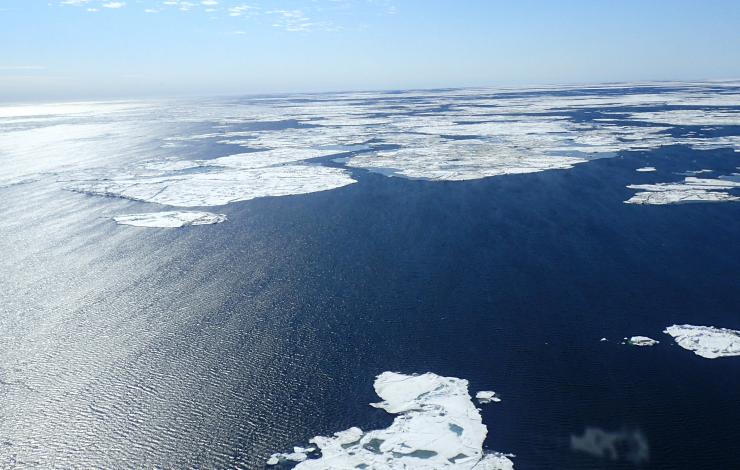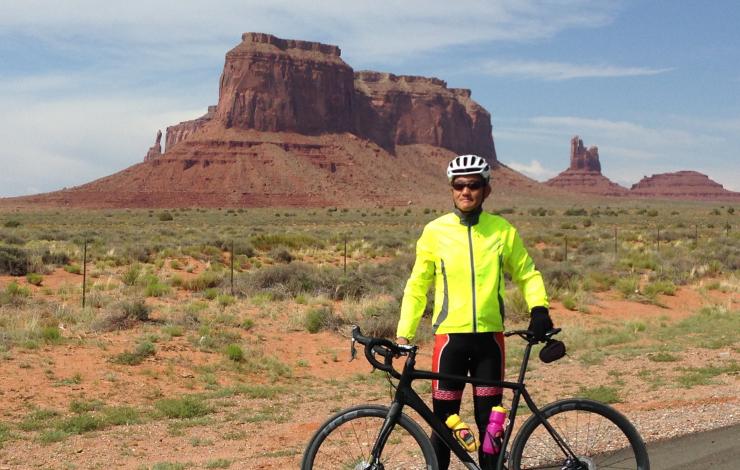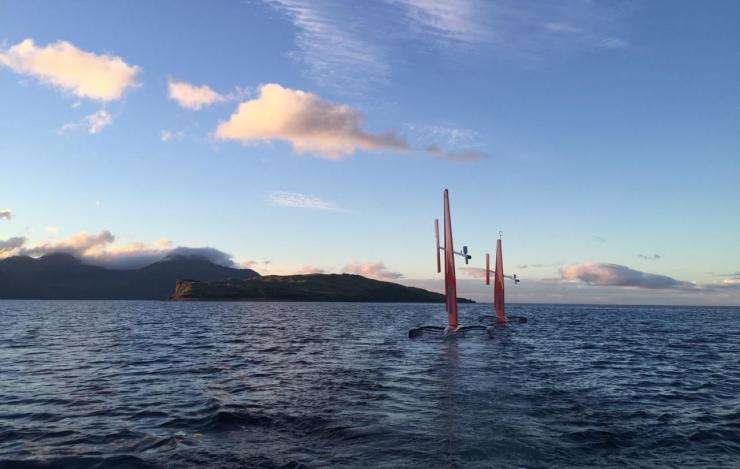What's New Archive
Scientists from PMEL’s Earth Ocean Interactions (EOI) group, which includes JISAO and CIMRS, return to the Mariana back-arc on the Schmidt Ocean Institute R/V Falkor from November 29 to December 20. The Mariana back-arc is west of the Mariana Trench near Guam and is a relatively unexplored region.
This year's research cruise follows up on discoveries made last year aboard R/V Falkor and will focus on those newly discovered hydrothermal vent sites and lava flows. This cruise is part of a multi-year exploration and research project to understand the character of hydrothermal systems and biological connectivity in the Mariana region.
PMEL’s Earth Ocean Interactions (EOI) group and collaborators are the first scientists using the new Schmidt Ocean Institute’s ROV SuBastian. ROV SuBastian will provide in-depth exploration and sampling of these systems to characterize their geologic setting, chemical environment, and biological communities. This expedition is supported by Schmidt Ocean Institute, NOAA's Ocean Exploration and Research Program, and the NOAA Pacific Islands Regional Office. (Image courtesy of Schmidt Ocean Institute)
Follow live with our scientists as the ROV dives down to explore the region: https://schmidtocean.org/technology/live-from-rv-falkor/ and on Twitter #hydrothermalhunt
Dr. Carol Stepien of NOAA's Pacific Marine Environmental Lab has been named a Fellow of the American Association for the Advancement of Science (AAAS). Election as a AAAS Fellow is an honor bestowed upon AAAS members by their peers.
This year 391 members have been awarded this honor by AAAS because of their scientifically or socially distinguished efforts to advance science or its applications. New Fellows will be presented with an official certificate and a gold and blue (representing science and engineering, respectively) rosette pin on Saturday, 18 February from 8:00 a.m. to 10:00 a.m. at the AAAS Fellows Forum during the 2017 AAAS Annual Meeting in Boston, Mass.
This year’s AAAS Fellows will be formally announced in the AAAS News & Notes section of the journal Science on 25 November 2016. As part of the Section on Biological Sciences, Carol Stepien was elected as an AAAS Fellow for her distinguished contributions to the fields of molecular evolutionary ecology and conservation genetics, particularly invasive and native populations, and mentorship of graduate and undergraduate students.
The tradition of AAAS Fellows began in 1874. Currently, members can be considered for the rank of Fellow if nominated by the steering groups of the Association’s 24 sections, or by any three Fellows who are current AAAS members (so long as two of the three sponsors are not affiliated with the nominee’s institution), or by the AAAS chief executive officer. Fellows must have been continuous members of AAAS for four years by the end of the calendar year in which they are elected.
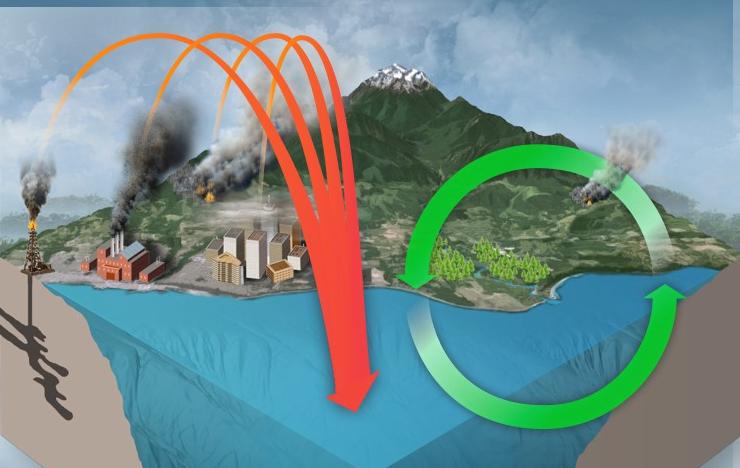
Prior to the industrial revolution CO2 was absorbed from the air by land plants, exported via rivers to the ocean and released back into the air creating a balanced cycle on time scales of centuries to millennia. Today, humans are altering this balance by releasing fossil carbon (e.g. coal, oil, natural gas). About one third of fossil CO2 is absorbed by the ocean, changing the ocean from a net source to the air, to a net sink.
Recent results published by the Global Carbon Project (GCP) earlier this month in Earth System Science Data show that global carbon emissions from burning fossil fuels did not grow in 2015 and are projected to rise only slightly in 2016, marking three years of almost no growth. The plateau in global emissions is largely the result of reduced coal use in China. However, emissions grew by 5.2% in 2015 in India, the world’s second most populous developing country, and other developing countries.
In spite of a nearly flat growth in emissions, the growth in atmospheric CO2 concentration was a record-high in 2015 and could be a record high again in 2016 due to weak carbon sinks. Carbon sinks refers to a reservoir that accumulates and stores carbon. Natural sinks are in the oceans and land plants, which typically absorb more carbon dioxide than they release. This past year, CO2 was not as readily absorbed by trees due to warm and dry conditions over tropical land caused by the recent 2015-16 El Niño event.
Atmospheric CO2 levels have exceeded 400 parts per million (ppm) and will continue to rise until emissions are reduced to near zero. This is the highest level for atmospheric CO2 in at least the last 800,000 years (See GCP Infographics for more details here).
PMEL scientists, Simone Alin, Adrienne Sutton, and Kevin O’Brien provided valuable data about CO2 in the oceans for this report. The Global Carbon Project was formed to develop a complete picture of the global carbon cycle, including the interactions and feedback between the natural and human systems.
Read the Global Carbon Budget 2016 article and highlights. To learn more, visit PMEL’s Carbon research page and the Global Carbon Project here.
Carol Stepien has recently joined PMEL as our new Ocean Environment Research Division (OERD) leader. She comes to PMEL from directing the Lake Erie Research Center at the University of Toledo. She brings with her expertise in evolutionary biology, biogeography, and conservation genetics and genomics. Her special research interests include environmental DNA, sensor networks, genomic adaptations, and bioinformatics of marine animals, fisheries, and communities.
She mentors several graduate students and postdoctoral associates and will continue to do so while at PMEL through the University of Toledo and the University of Washington’s Joint Institute for the Study of the Atmosphere and Ocean. During her time at the University of Toledo she was honored as a Distinguished University Professor of Ecology and is a 2016 nominee to become a AAAS (American Association for the Advancement of Science) fellow.
She was also active in the community and enjoys participating in outreach events. Carol serves on the Editorial Board of the journal Molecular Phylogenetics and Evolution, and is an editor for the new journal Ecological Processes and the genetics editor for the journal Biological Invasions.
A recent perspective piece in Nature Climate Change by Jim Overland at PMEL and other scientists discusses the latest research on whether Arctic warming is fueling more severe winter weather in the mid-latitudes, the temperate zone of the Earth between the tropics and the Arctic, and the part of the United States where most Americans live.
Research conducted by a diverse, international group of scientists agree for the first time that the pattern of severe cold winters in the mid-latitudes is primarily based on the state of the jet stream, which is naturally variable. They also emphasize community coordination for both scientific progress and communication to a broader public. The group of researchers also agreed that there is no simple cause-and-effect relationship between a warming Arctic and an emerging pattern of severe winter weather in the mid-latitudes. It’s much more complicated, with different connections in different regions and under different background climate conditions.
Read the perspective piece here as well a Q&A with Jim Overland here.
Dr. Chidong Zhang has recently joined PMEL as our new Ocean Climate Research Division leader. He comes from the University of Miami where he’s been a professor at the Rosenstiel School of Marine and Atmospheric Science. He brings with him expertise in large-scale air-sea interaction and atmospheric dynamics in the tropics. His special research interests include the Madden-Julian Oscillation (MJO), ITCZ, African monsoon, and air-sea interaction.
He is an active member in the American Meteorology Society and the American Geophysical Union. He also serves as a co-chair of the Science Steering Committee of Years of the Maritime Continent (YCM) and is the editor of the Journal of Geophysical Research-Atmospheres. He has mentored several graduate students and postdoctoral associates and will continue to do so while at PMEL through the University of Miami and the University of Washington’s Joint Institute for the Study of the Atmosphere and Ocean.
We are very excited to have Chidong join us. Welcome!
In the summers of 2008–2010, Dr. Ned Cokelet added rugged instruments to NOAA bottom trawl survey nets on the eastern Bering Sea continental shelf – site of the nation’s most productive fisheries – to measure ocean temperature and salinity at over 350 locations. The results, released in Deep Sea Research II, provide the most comprehensive view to date of the three-dimensional thermohaline structure. Horizontal variations of the ocean’s mass density, computed from the temperature and salinity measurements, give the ocean currents shown by arrows in the accompanying figure for summer 2010. The flow was strongest west of the Pribilof and St. Matthew Islands, and there was clockwise circulation around St. Matthew Island. The upper layer of the ocean was mixed down to less than 30 m over much of the region, but reached depths greater than 70 m along the Alaska Peninsula. Upper-to-lower layer salinity differences contributed more than temperature to density differences over most of the region. These observations enhance our understanding of plankton and fish-larval transport and can serve to calibrate predictive computer models of the ecosystem.
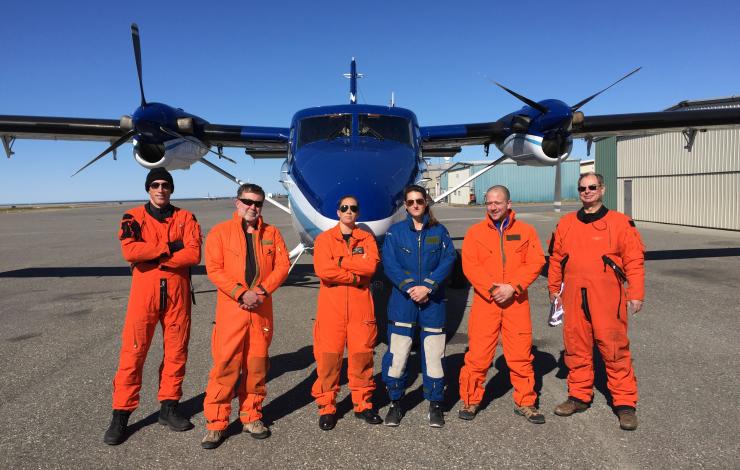
The PMEL Arctic Heat research team, including cooperative institute (JISAO) scientists, in front of NOAA Twin Otter during the first flight in June. From left to right: LT Alex Johnston, co-pilot; Dr Kevin Wood, lead scientist; LT Shanae Coker, aircraft commander; Leah Chomiak, Hollings Scholar; Alex Ekholm, WHOI engineer; Jeff Smith, scientific systems engineer.
September 10 – 20: The Arctic Heat Team has been making their way from Barrow, AK to Kotzebue on a specially-outfitted NOAA Twin Otter aircraft. Over the 10 day mission, the team is launching traditional atmospheric and oceanographic probes as well as the experimental Air-Launched Autonomous Micro-Observer (ALAMO) floats into the Chukchi Sea. Four ALAMO floats were deployed in June 2016 in the Chukchi and Beaufort Seas. These floats will continue to collect data on upper ocean temperatures throughout the year.
The team on this mission includes: Kevin Wood and Nick Bond from UW/JISAO and NOAA/PMEL, Woods Hole Oceanographic Institution’s engineer Alex Ekholm, and LTJG Kevin Doremus as the Aircraft Commander.
Watch a video of the team launching various floats during the first deployments on YouTube.
On September 3, after three months of collecting data in the Bering Sea, the two Saildrones have been safely recovered. The Saildrones each traveled almost 3000 nautical miles in 101 days. After arriving in Dutch Harbor, AK, the Saildrones were packed into a container and shipped to their home base in San Francisco, CA. Data from the tested technologies for fish and marine mammal acoustics are expected mid-September with preliminary analysis completed around the New Year.
This was a collaborative mission between the Pacific Marine Environmental Lab, Alaska Fisheries Science Center, Saildrone, Inc., Simrad AS/Kongsberg Maritime, Greeneridge Sciences, Inc, and Wildlife Computers.
Continue to follow the Saildrone on the Innovative Technology for Arctic Exploration page to learn more about upcoming events and preliminary results in the weeks and months to come.
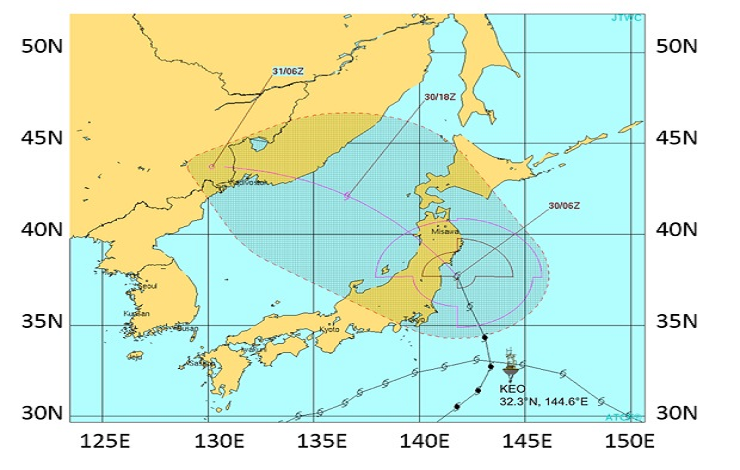
Path of Tropical Storm Lionrock, as it passed the NOAA KEO mooring, and makes it way toward Japan. Storm track image from the Joint Typhoon Warning Center.
As residents in Japan prepare for Tropical Storm Lionrock today, August 30, scientists at NOAA and the University of Washington’s Joint Institute for the Study of the Atmosphere and Ocean (JISAO) study the behavior of the storm. Lionrock is expected to make landfall across northern Japan, affecting many highly populated areas, including Fukushima and other areas impacted by the 2011 tsunami.
With funding awarded for research after Super Storm Sandy caused massive damage to the east coast of the US, NOAA and JISAO scientists aim to improve storm track models to better predict where storms will go, and how powerful they might become. To achieve this, they are using data from the NOAA Kuroshio Extension Observatory (KEO), along with model simulations performed at NOAA’s Environmental Modeling Center.
KEO is a moored buoy, located off the coast of Japan, where it is frequently in the path of storms and tropical cyclones. When Lionrock passed over KEO on Monday August 29, wind gusts were recorded at over 81mph, and storm-induced currents approached 3 knots, some of the highest ever recorded at the site. These data, along with other measurements of the ocean state, both before and after the passage of the storm, will be valuable tools in assessing, and ultimately improving, storm prediction models.



